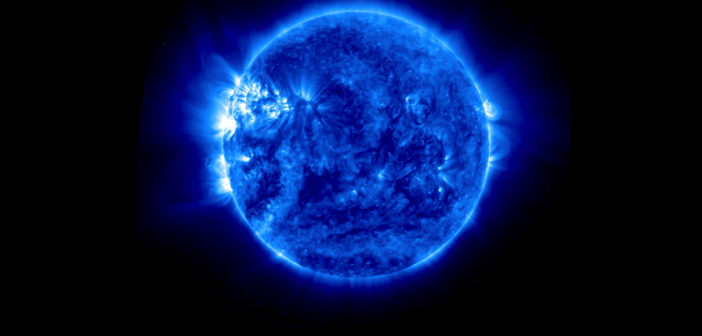Editor’s note: In these last two weeks of 2021, we’ll be looking at a few selections that we haven’t yet discussed on AAS Nova from among the most-downloaded papers published in AAS journals this year. The usual posting schedule will resume in January.
The Source Locations of Major Flares and CMEs in Emerging Active Regions
Published March 2021
Main takeaway:

Extreme space weather events like solar flares often arise from solar active regions where magnetic field lines of opposite polarity are located close together. This map of the Sun’s magnetic field shows field lines directed out of the Sun’s surface in white and those directed inward in black. [Solar Dynamics Observatory, NASA]
Why it’s interesting:
A prominent focus of solar physics is to understand how extreme space weather events like solar flares and coronal mass ejections form. When directed toward Earth, these explosive events can cause geomagnetic storms: widespread disturbances of Earth’s protective magnetic field that can result in auroras, damage to power grids and spacecraft electronics, and radio communications blackouts. Part of the mitigation strategy for bad space weather is to be able to predict when it will occur, but it’s not yet clear why some active regions — places where magnetic fields bubble up through the Sun’s surface — produce flares or coronal mass ejections and others do not.
What’s the status of these active regions:
Liu and collaborators find that the complexity of the magnetic field in the active region plays a key role in whether or not it will erupt; none of the 19 active regions studied consisted of a single bipole — a region with areas of opposite magnetic polarity — but rather were made up of multiple bipoles colliding. Colliding bipoles might be the smoking gun for extreme space weather events: the more severe the collision, the more severe the resulting event. Ultimately, Liu and collaborators suggest that the characteristics of these colliding regions on the Sun’s surface could be used to forecast space weather.
Citation
Lijuan Liu et al 2021 ApJ 909 142. doi:10.3847/1538-4357/abde37
